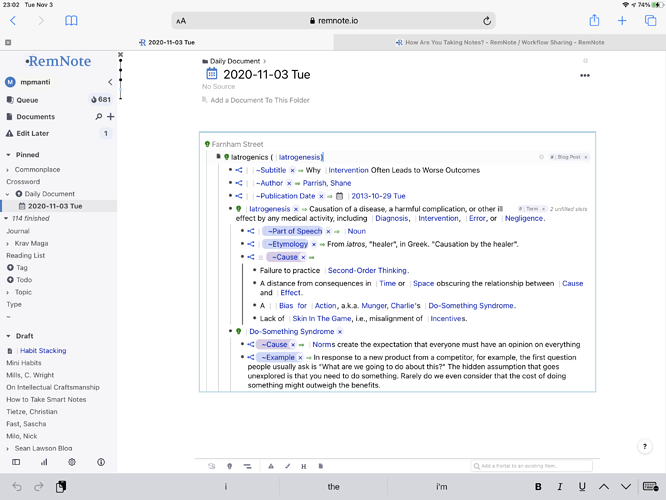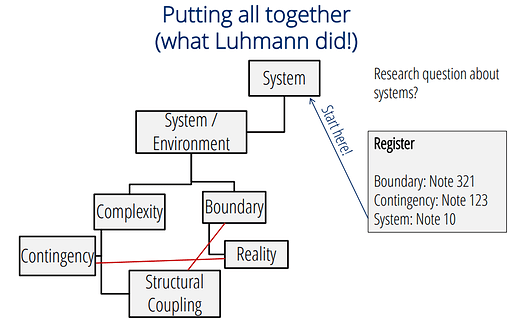It is a great way to make flashcards, but flashcards should not be confused with notes. Consider the Universal Descriptor page as presented in the tutorials: is “Why Exists” truly in the same category as “Components”? I would argue that the outliner already presents the opportunity to put notes “behind” other notes, while concept-descriptor just needlessly narrows the field while stretching the word “descriptor” to its absolute breaking point. If people go looking to break down things into objects with properties from the off, they are likely to skip looking for broad connections and the way the things fit into their own thinking, which is the primary benefit of making your own notes rather than copypasting the textbook.
This fits nicely into my argument, since half the descriptors are actually describing backlinks or tags, but the current flashcard system necessitates adding additional lines to cloze or ::. Find some way to integrate the wiki features into flashcard ones (the feature requests subforum is the liveliest one for a reason). Aliases are a must for this, I feel, and can serve as cloze hints.
I feel like a broken record at this point, but Zettelkasten has proved to be good enough to not only study, but create information on a “Theory of Society”, which is about as interconnected and abstract as you can get without needing a supercomputer. The things lacking in RemNote from that perspective are that portals are a bit too cumbersome, both visually and lag-wise, to create many desktops with different hierarchies of notes, and there is a limit of two panes rather than as many as needed, as in Obsidian. Queries from Roam would be nice to find the notes to setup the desktop, but I assume they are harder to implement.
Out of interest, is anyone on the programming team reading any of this? Or do they have their hands full with bugs on github? Don’t get me wrong, it’s nice to have any lines of communication, but whatever happened to Martin calling people up?
I think I could be forgiven for that, given the title and OP. At any rate, I see an opportunity to reach out to the devs, I take it. Hopefully my reaching out is not getting too persistent.


